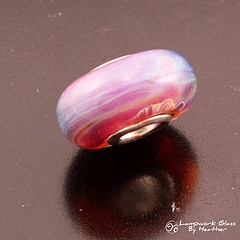
British Crown Jewels Represent One of the Largest Jewelry Collections in Existence
Subject to a turbulent history and much thievery, the British Crown Jewels represent the regalia and vestments worn by the king or queen of the United Kingdom during a coronation ceremony and other state functions. In all, the collection includes crowns, orbs, swords, scepters, and other regalia. Gold and silver plate was refashioned in 1661 after parliament had ordered the original gold and precious metals to be melted down for coinage in 1649.
By British Law, the originals of the crown jewels and implements of the State cannot leave England and are displayed in the Tower of London. Many of the objects descend directly from the pre-Reformation period and hold religious and sacral connotation. For instance, the vestures worn by sovereign following the unction, a ceremonial ritual, resembles the alb and dalmatic worn by bishops.
Crowns
Some of the crowns contained within the Crown Jewel collection are used by every sovereign, while others were created specifically for a particular sovereign or for the Queen’s Consort, or wife of a king. Typically the crown of a king has a slightly pointed arched top, while that of a queen has a slightly bowed top.
Considered by a number of British monarchs to be extremely heavy and difficult to wear, St. Edward’s Crown is worn during most of the coronation ceremony. Made of gold, the crown includes 444 precious stones. Queen Elizabeth II chose to wear a stylized representation of the crown in images of the Royal Coat of Arms of the United Kingdom.
Worn by monarchs at their coronation, the Imperial State Crown was made in 1937 for King George VI. The crown is set with jewels of great antiquity and historical significance. In all, the crown possesses 2,868 diamonds, 273 pearls, 17 sapphires, 11 emeralds, and five rubies. The oldest stone is Edward the Confessor’s sapphire, believed to have been worn by him in a ring and now mounted in the cross patee above the monde. An ancient spinel, known as the Black Prince’s Ruby is said to have been given to Edward by Pedro the Cruel of Castile. The crown is worn after the conclusion of the coronation ceremony when the monarch departs Westminster Abbey, and also at the annual State Opening of Parliament.
The Imperial Crown of India was created when King George V visited Delhi as Emperor of India. As British law prohibits the removal of a Crown Jewel from the country to prevent pawning, a new crown was made. One of the heaviest crowns in the collection, the Imperial contains more than 6,000 diamonds.
Queen Elizabeth the Queen Mother’s Crown was made for her coronation as queen consort in 1937. The graceful crown is set with diamonds, dominated by the famous Koh-i-noor diamond. Once the largest known diamond in the world, the Koh-i-noor is also referred to as the “Mountain of Light.” Originating in India, the diamond belonged to various Indian and Persian rulers and has its share of legends. Tradition says that its male owners will suffer misfortune and death, but women who possess it will rule the world.
The Orb and Sceptres
Two scepters used by a sovereign for a part of the regalia. The Sceptre with Cross was made in 1661. Surmounted by a cross, it was redesigned in 1905 to incorporate the Great Star of Africa, the second largest cut diamond in the world after The Golden Jubilee. The monarch bears the Sceptre with the Cross in the right hand. Borne in the left hand, the Sceptre with the Dove was also made in 1661. The dove atop the sceptre symbolizes the Holy Ghost. As the sovereign holds both Sceptres, he or she is crowned with St. Edward’s Crown.
The Sovereign’s Orb is a hollow golden sphere made in 1661. A band of jewels runs across the center with a half-band of jewels running long the top. Atop the orb is a jeweled cross representing the sovereign’s role as Defender of the Faith.
After they were stolen from Westminster Abbey, the Crown Jewels have been kept at the Tower of London since 1303. It is believed that most, if not all, of the jewels were recovered not long after being found in display window of a London jeweler. During World War II, the jewels were taken out of the Tower and stored somewhere in secret. Stories suggest they may have been kept in the basement vaults of the Sun Life Insurance company in Montreal, Canada or in the Round Tower of Windsor Castle. It is more probable that they were housed at Windsor Castle since by law the Crown is not allowed to leave the country.
The absolute value of all the gold, silver, platinum, diamonds, sapphires, rubies, emeralds and pearls in the royal collection make it beyond comparison. Added to the fact that the crowns and other artifacts have all been worn and used by kings and queens of England makes the collection priceless.
While a majority of people will never wear such priceless treasures, Pandora Jewelry has created a collection of bracelets and complementary jewelry that make a woman feel like a queen. Handcrafted from 14K gold and sterling silver, each Pandora bracelet tells personal stories with the use of charms along with Murano glass beads and semi-precious stones. Pandora bracelets mark special occasions commemorated with charms and birthstones set in a design totally unlike another.
About the Author
Lewis Jewelers is proud to carry the full line of
Pandora Jewelry
. Pandora bracelets, Pandora charms and Pandora beads are only a part of the collection. For more information, Lewis Jewelers, 2000 West Stadium Blvd., Ann Arbor, Michigan, 48103, 877-88-LEWIS or visit the website.